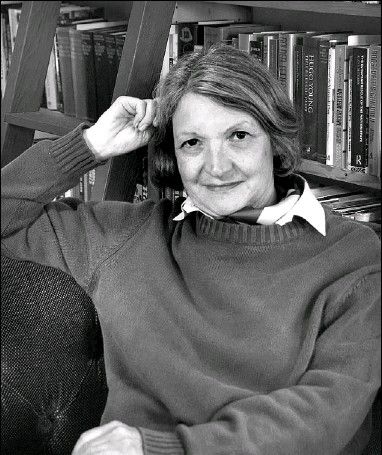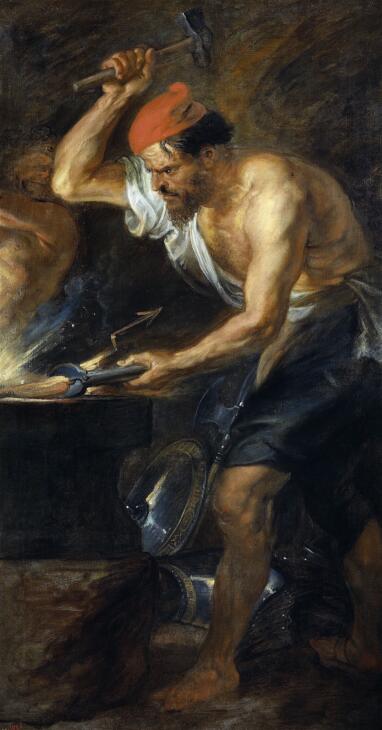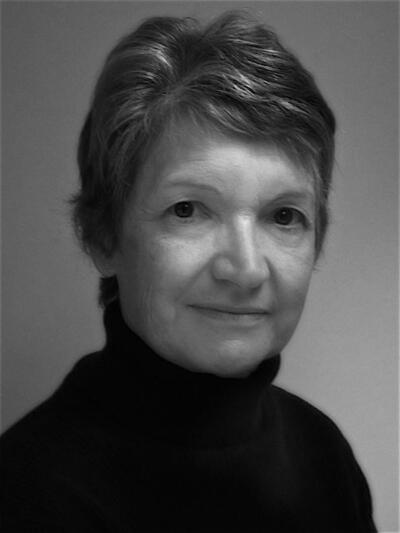1579 Swindles, scandal, affluence
Art for Art’s Sake
by Maria Tippett
Cambridge, UK: Pegasus Publishers (Vanguard Press), 2022
$16.99 / 9781800164130
Reviewed by Ginny Ratsoy
*
 This nonet of stories is unified, as the title suggests, by a focus on visual art — unsurprising given that Tippett is a renowned art historian. The book’s title is sometimes straight up — characters are concerned with the intrinsic worth of art — but more often art is a commodity, booty of war, political object, and pawn.
This nonet of stories is unified, as the title suggests, by a focus on visual art — unsurprising given that Tippett is a renowned art historian. The book’s title is sometimes straight up — characters are concerned with the intrinsic worth of art — but more often art is a commodity, booty of war, political object, and pawn.
Neither an art historian nor artist, I find the book’s exploration of the unpredictable fate of a work of art compelling. Whether the artist’s motive is expression, evocation, prestige, or riches, the fate of a work sent out into the world is incalculable. If an art object achieves longevity, it will likely live many lives — handled and perceived of differently through the ages, subject to the vagaries of time. The typical narrative stance in the collection, appropriately, is somewhat detached and whimsical with satirical undertones.
Lead story “Inconspicuous Consumption” provokes ethical and philosophical questions around privileged acquisition and hoarding of art. The narrator recalls his art student days tending the Henleys’ formidable art collection — gained through the toil of the poorly paid and ill-treated employees in their slaughterhouse. Sworn to secrecy about that collection — heavily early Picasso — he takes on similar responsibilities for the Henley heir, who, as a condition of his legacy, cannot sell the collection nor reveal its contents. Jane, the third generation in the Henley art lineage, and interested only in emerging artists, subverts things by donating the collection to the Musée Picasso in Paris — conditional on the family’s donation remaining anonymous. The narrator thus becomes heir to the third generation of Henley secrets.

Human pawns in the game of art frequent the collection. In “Flight,” a London server/ rookie arts journalist visits her Suffolk Uncle Colin, head of a publishing company and immediate neighbour of a famous reclusive sculptor. Against all odds, Colin commissions her to write a biography of the sculptor, Phyona West. The biographer fills notebooks with the booze-fuelled reminiscences of the formidable, elegant octogenarian: a childhood sketching war-torn Britain, teen years as an artists’ model, art school student defying patriarchal authority, and teacher in a rough area. However, West is mum about her 1963-65 disappearance.
Despite misgivings, and evidence of West’s further deception, the biographer diligently polishes her first draft. Upon her return to Suffolk — for West’s funeral — two fellow mourners illuminate those two years, painting West in an unfavourable light. The biographer’s joy of discovery is short-lived: Uncle Colin pushes ahead with publication, unwilling to tarnish West’s name. West’s reputation is intact and, ironically, her uneasy biographer’s reputation is firmly established — her first work a best seller.
Art commodification induces forgery in “Double Bluff” as an English novelist recalls his relationship with a stereotypical American entrepreneur, beginning in a sketchy Paris hotel in the 1950s. When Bud’s San Diego business, selling velvet paintings made by impoverished Mexicans, proved unsustainable, he had relocated to Paris, determined to understand art. After a disappearance of several years, Bud re-enters Davenport’s life — as the dapper Armand.
Eventually, Bud explains his transformation: he purchased student copies of Louvre paintings and sold them to gallery goers as “original copies” of works they admired. Later, he upped the stakes at the Hotel Hemingway by proffering “original paintings,” and was never found out. Just when Davenport considers Bud’s Armand story as fodder for his third novel, one of Armand’s victims exacts a fitting revenge that prevents novelization.

Swindling more sophisticated and political forms the core of “Private Enterprise,” narrated by the director of a gallery at a rural Quebec university. Ronald Lee inherits a collection international in scope, lacking only Baroque and Montreal Automatistes work. Lee works on rectifying the latter gap and Fine Arts professor Tibor Nagy on the former. Returning from a Hungarian trip in 1953, Nagy bears unexpected treasures — by Caravaggio, Peter Paul Rubens, and Rembrandt — claiming the Hungarians are so cash strapped he purchased them for a song. Lee’s gallery garners nationwide attention — and demands from the major Ottawa gallery for the Baroque paintings. But Lee resists, and Nagy bolsters the already spectacular collection.
However, on Nagy’s third trip, Nagy also buys for the Ottawa gallery and eventually accepts a position in Ottawa. When the Hungarian Uprising precludes further purchases, Lee engages a Hungarian refugee, an art historian, to investigate the authenticity of Nagy’s acquisitions. She judges his gallery’s acquisitions authentic, but, later, investigating the provenance of all the paintings, pronounces the Ottawa acquisitions falsely authenticated. Scandal ensues, as galleries across North America discover they possess misattributed paintings — whether or not Nagy was involved. Lee visits Nagy in prison, awaiting extradition to Hungary. However, big questions remain unanswered, as the two ponder Nagy’s photos of Baroque paintings.
Politics is also central to “Why Not?” which examines the changing art world from the perspective of German art dealer Horst, whose family’s success owed much to exploitation in the 1930s and during the Second World War and post-war catering to collectors and members of occupying forces in Berlin. Horst continues the gallery’s prosperity into the 1960s by maintaining the conservative collection and familial habits. By the 1970s, though, Horst and his collection are passé, necessitating drastic professional and personal cuts. An art student advises him on collection updates and talks her way into curating an exhibition by two Neo-Expressionist friends. With a sold-out show, the Wenshoffer Gallery transforms from antiquated haven for late 19th-century paintings to global centre for Neo-Expressionism. Only Horst avoids modernizing: he returns to his post-war habits of affluence — his influence on daily gallery operations minimal.
“Nothing is Forever” and “Against the Grain” explore art-familial conflict. In the latter, a father-son relationship declines because of irreconcilable differences and the artist-son becomes a victim of his own success. In the former, a separated couple amicably divides up their art collection, disagreeing only on the ownership of a painting acquired on their honeymoon. When fate intervenes, readers are reminded that an obsession with art can destroy not only the obsessed but also the art itself.

“Gang of Three” invites readers into artistic process and collaboration. Three middle-aged women unite to practice their craft in a coastal BC mill town in the 1980s. Ruth, wife of a mill worker, compiles driftwood sculptures of questionable merit; Karen, retired advertising executive, paints on wet paper; and Betty, trained artist and art historian, also paints. After initial local success, the trio stagnates, until they create a multimedia documentation of Ruth’s husband Jim’s mill accident, which left him disabled. The exhibit — complete with Jim’s work boots, his testimony, a logging industry film, and drawings and paintings — succeeds on several levels. Jim may receive better compensation; he and Ruth cope better; and the Gang of Three attracts galleries nationwide. When Ruth resumes driftwood collecting for the next project, the effect of the exhibit on her artistic growth is an open question.
The collection’s penultimate piece, “Metamorphosis,” most vividly illustrates artistic vagaries. A shell narrates its autobiography: from the ocean floor to a block of marble in Michelangelo’s hands, it comes, by the early 19th Century, to form part of a commission for Neo- classical sculptor Antonio Canova’s third version of The Three Graces. After workers chip away at our narrator and Canova subsequently accidentally shatters it, it is relegated to a shed. However, when Canova is commissioned to do a bust of a friend’s recently deceased daughter, it forms part of a tiny, sumptuous nude, displayed only in the commissioner’s homes. Prey to a changing political landscape, the sculpture, Canova’s last work, is vaulted until 1922, when it is resurrected as the “pin-up girl” for Mussolini’s regime. Its owners, Sephardic Jews, meet tragic ends in extermination camps in 1943, but the sculpture survives, only to become booty for a British chaplain, who smuggles it home for his daughter. By 1947, the statue is a mannequin for the daughter, who, later, as a fashion designer, passes it off as a junk shop find until the 1970s, when a museum curator uncovers its provenance. The fashion designer and the curator become engaged and share the statue. The designer reluctantly permits the sculpture’s display in the curator’s Canova exhibition in New York, where our humble narrator becomes the centrepiece – and the centre of speculation. Its return to the designer, jilted by the curator, results in the shell’s return to its natural — albeit altered — place.
I would be remiss if I did not address editing problems with this collection. In addition to its odd mixture of British and American spelling — not to mention highly questionable punctuation choices and basic proofreading errors — there is at least one blatant error: Tibor Nagy arbitrarily becomes Tibor Frank. These oversights mar an otherwise professional work.
Still, Maria Tippett’s unconventional prism into an array of corners of the art world in various times and places is held together by a recognition of human foibles, a respect for and understanding of art itself, and a well modulated narrative stance. Art for Art’s Sake amuses, provokes, and enlightens.
*

Ginny Ratsoy is Professor Emerita at Thompson Rivers University. Her scholarly publications focus on Canadian fiction, theatre, small cities, third-age learning, and the scholarship of teaching and learning. In addition to counteracting ageism by maintaining a growth mindset through freelance writing and community engagement, she promotes later-life learning through her involvement as a board member, instructor, and coordinator for the Kamloops Adult Learners Society. Editor’s note: Ginny Ratsoy has recently reviewed books by Gillian Ranson, Jo Owens, Iona Whishaw, Mark Bulgutch, Ron Base & Prudence Emery, and Maureen Brownlee for The British Columbia Review.
*
The British Columbia Review
Publisher and Editor: Richard Mackie
Formerly The Ormsby Review, The British Columbia Review is an on-line journal service for BC writers and readers. The Advisory Board consists of Jean Barman, Wade Davis, Robin Fisher, Barry Gough, Hugh Johnston, Kathy Mezei, Patricia Roy, Maria Tippett, and Graeme Wynn. Provincial Government Patron (since September 2018): Creative BC. Honorary Patron: Yosef Wosk. Scholarly Patron: SFU Graduate Liberal Studies.
“Only connect.” – E.M. Forster
7 comments on “1579 Swindles, scandal, affluence”